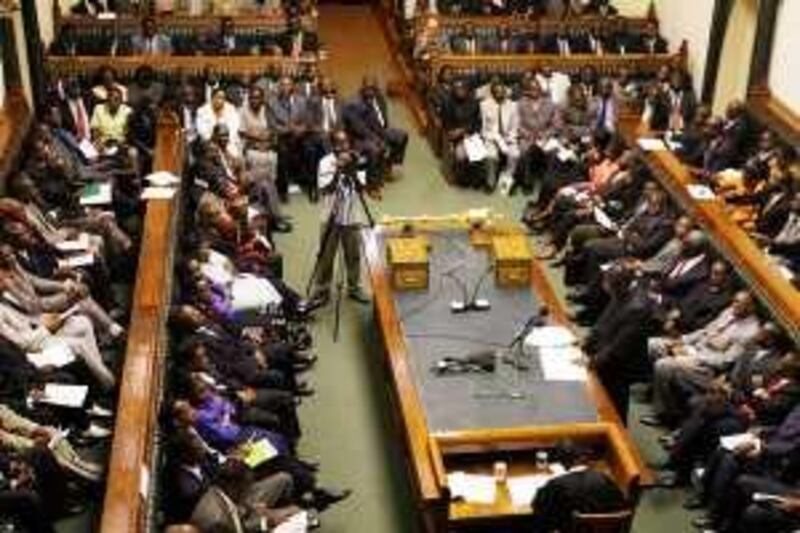HARARE // After hosting legislatures for more than 112 years, Zimbabwe's parliament building in central Harare will soon be replaced as the government starts constructing a new facility to accommodate its growing number of parliamentarians. The existing parliament building, a regal six-storey edifice, was built in 1895 as a hotel to serve white settlers. Situated about 100 metres from the point where the Union flag was hoisted by Cecil John Rhodes's imperialist invading force on September 13, 1890, it was converted into a parliament building three years later.
The current finance minister, Tendai Biti, said the state-of-the-art structure, built at a cost of US$120 million (Dh441m), would stand on top of an equally historical site - the Kopje - a hill four kilometres south-west of the present parliament in Harare, the capital. Members of the Pioneer Column, as Rhodes's occupying force was known, initially pitched their tents on the Kopje when they landed in what is present-day Zimbabwe. The next day, they moved to the centre of Harare, near the present parliament, raised the British flag and built a fort. Years later that centre became known as Cecil Square. In 1980, it was renamed Africa Unity Square.
"We expect work will start any time before the end of this year," Mr Biti said. "We are negotiating with prospective funders, locally and abroad." The proposed facility would offer space for two legislative chambers, consistent with the country's bicameral parliament system. It will also provide on-site boarding facilities for use during sessions by MPs who come from outside Harare and do not have residential accommodation in the city.
Jabulani Mangena, an MP for rural Mberengwa North constituency, 400km south of Harare, said parliamentarians were often "squashed" during sessions. The situation was worse in the 210-seat House of Assemby, the lower house of parliament, he said. "It is a good idea because if every MP is present, especially in the House of Assembly where I sit, we would be squashed. It is not an ideal situation. It is clear that the present parliament was meant for fewer people than we have now. The opportunity cost of building it is huge, considering the hotel bills that parliament is incurring now."
The cash-strapped parliament was recently caught in a media storm after revelations that it spends $17,000 daily to pay for accommodation and food for MPs during sessions. Following its renovation into a parliament in 1898, the current building remained unchanged until 1937 when it was enlarged. In 1969, the building was increased to six storeys and in 1989, the chamber was further extended to accommodate an expanding legislature. In 2000, it was enlarged again when an adjacent building was leased to parliament, but it remains small for the 320 MPs for Senate and House.
The Kopje gives commanding views of Harare's central business district to the north-east, its industries and residential areas to the west and south. It is a quiet place and favoured as a picnic spot. Or was. Keeping a picnic spot is not in the new parliament plans. Charles Matongo, a photographer, who sometimes operates from the proposed construction site, said the location was symbolic. "Parliament performs an oversight role of the executive and other arms of the state. From here, I believe their sight would be sharper and broader," he chuckled.





